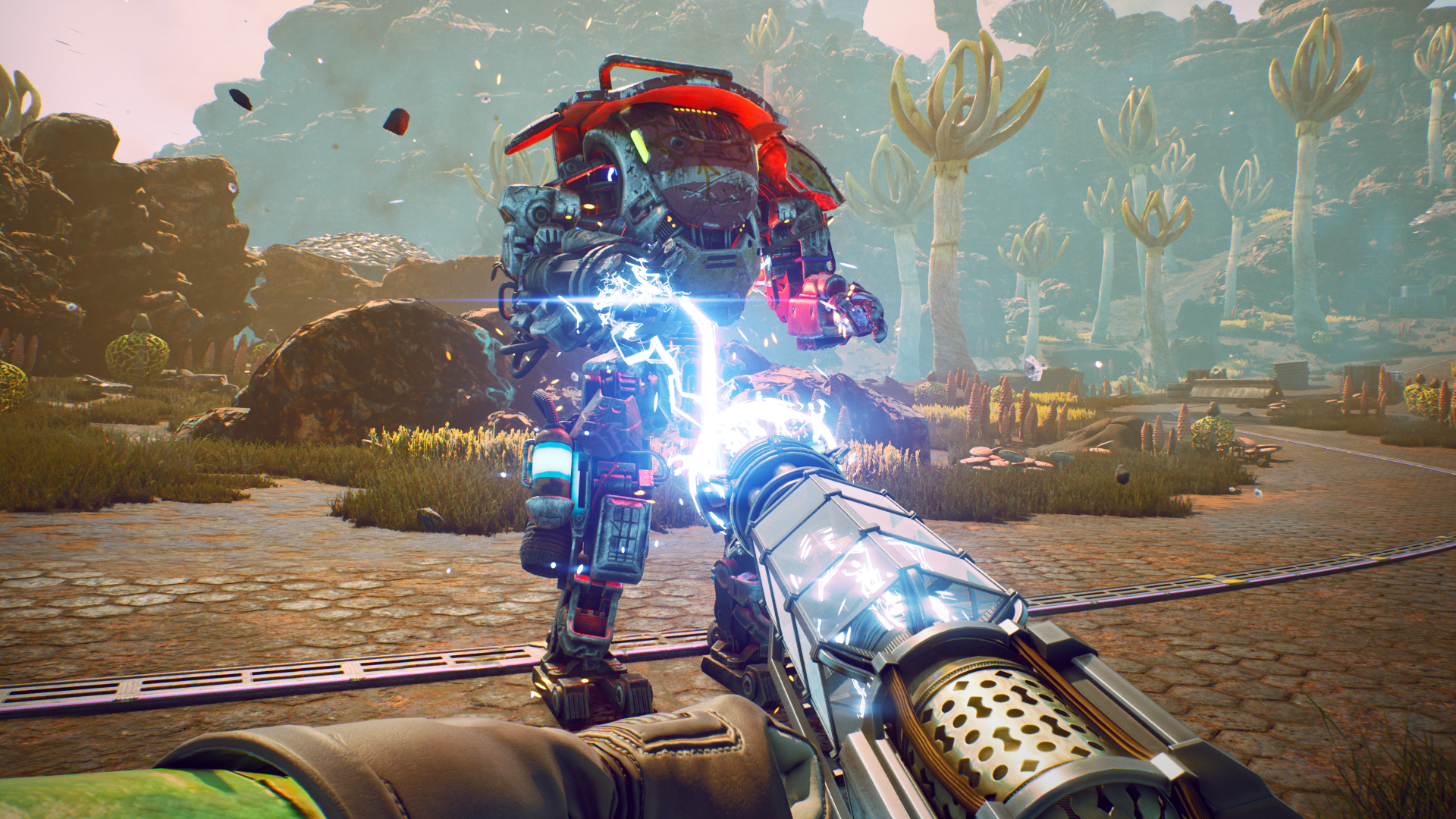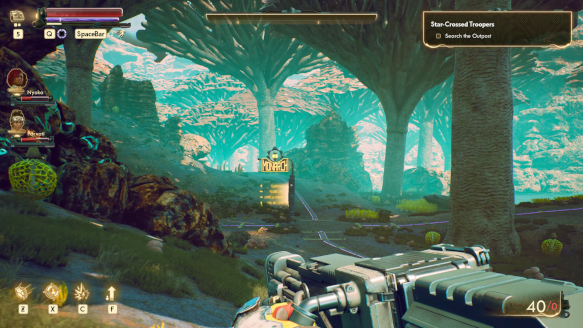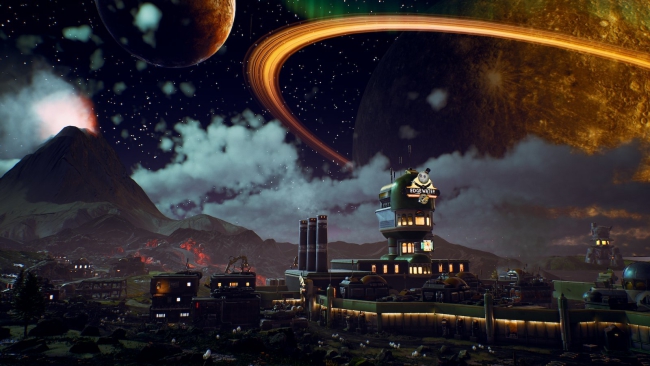The Outer Worlds is Obsidian Entertainment’s first new game since their acquisition by Microsoft in November 2018. With just under three months to go until its late October launch date, we were invited to spend a few hours in sunny Santa Monica to get some hands-on time with the game.
Ideal Hardware Conditions
First, a caveat: we were playing on some seriously beefy PC hardware. An Intel Core i9 processor was paired with 32 GB of RAM, for starters. The game was installed on a crazy-fast SSD, likely some NVMe M.2 behemoth that even the PS5 won’t be using. Meanwhile, an NVIDIA GeForce RTX 2080 ensured things ran buttery-smooth, even while recording 1440p footage. So any amazing graphics or performance seen in gameplay footage around the ‘net is a best-case scenario, through and through. There is no telling how well The Outer Worlds will be optimized for the stock PS4 or PS4 Pro, so we will refrain from commenting on those aspects of the game other than to say that if you like a more colorful palette mixed with your first-person loot shooter RPG, then you will find plenty to like here.
We played the introduction of The Outer Worlds, but were asked not to talk about it in an effort to hold back spoilers for as long as possible (and because some parts of this aspect were likely not finalized yet). After that, though, we were given free reign over a section of Monarch, the planet where the player currently found themselves at a certain point in the story. I was joined by two female companions, one who had plenty to say when asked (Nyoka), while the other had essentially nothing to say to me anymore (Parvati). I’ve seen this type of behavior before in games from this genre, where an NPC becomes a broken record once their quests are completed. It’s almost the same in The Outer Worlds, except that Parvati still actually had questions for Nyoka, and they exchanged banter which depended upon the location that we were currently nearby. That was an impressive exchange that likely also changes depending upon who the current party members are, which probably involves recording a bunch of extra dialog that most players won’t hear unless they do multiple playthroughs.
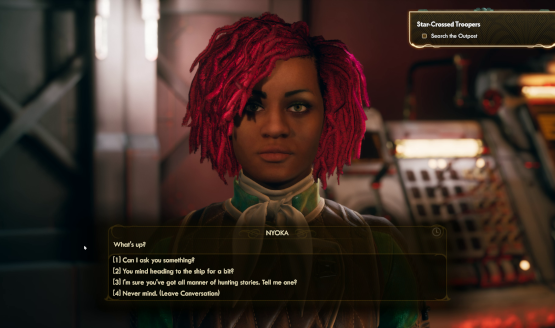
Decent Companions
These companion characters weren’t only there to talk to and receive quests from. They also fought alongside me, and quite well I might add. There was no real babysitting of them, either, as neither died during my play through – always a good thing to see AI that doesn’t kill itself! Both companions also had special abilities that could be unleashed every so often, such as Nyoka unleashing a massive, overkill-inducing minigun or Parvati slamming a gigantic, electric, Thor-style hammer into the ground, stunning nearby enemies and obliterating ones that were too close or too damaged prior to the move being executed. These proved very useful moves to use in a pinch, though they did hilariously teleport companions to the exact enemy that I was aiming at when I called in the move, which reminded me that the game was still in development.
The hour and a half or so that we spent with the part of The Outer Worlds which we can talk about was, of course, a small sampling of what players can expect in the full game. Even so, we met plenty of interesting characters in a nearby settlement, and opportunities to interact with them in both positive and negative ways. Everyone had something interesting to say, even if most of them were unimportant NPCs who basically just stayed in place for their entire existence.
While inside the settlement things were calm, outside was a different story. Roaming packs of Marauders (relatively low-level bandits) could be found from time to time, who could put up a decent fight. They would also occasionally sic their dog-like pets on my group to keep us on our toes. It felt very familiar, like a loot shooter that you’ve played before, just with a different setting and more colorful palette. Not that I’m complaining! Combat is a real-time affair, with nothing like the time-stopping V.A.T.S. stuff from Fallout: New Vegas to be found (Editor’s Note: Though there is a time-slowing feature that does somewhat mimic the V.A.T.S. effect). That makes sense, as this is a completely new IP, in a completely new setting, and The Outer Worlds needs to differentiate itself from previous efforts from Obsidian.
Flaws: We All Got ‘Em
There is some weapon and item crafting, available at workbenches throughout the world. While we didn’t spend too much time in this interface given our limited time with The Outer Worlds, this did bring our attention to the Perks system. There are multiple skills to choose from as players level up, and for every 20 points put into a skill, a Perk can be unlocked. Perks do things such as increase health recovered from health packs, increase defense to certain types of attacks, and more. But what’s more, there are context-sensitive Flaws that can be unlocked.
For instance, during my demo I caught on fire a couple of times when I failed to dodge from a few fire-spewing enemies in time. This triggered being presented with the choice to accept having a Flaw, whereby I would take even more fire damage, but I would be rewarded with a Perk point immediately upon accepting this Flaw. This seemed to be a one-time offer, too, so this was a Perk point I might not earn for a long time. Despite the tantalizing carrot being dangled in front of me, I ultimately opted to not take the Perk if it meant a permanent increase in the damage I received from my unfortunate encounters with flames.
Perhaps if this Flaw also came with a permanent increase in agility, I’d be more tempted – after all, if I’m now feeling the pain more than before when engulfed, wouldn’t it behoove me to run around like even more of a maniac? I was later told by an Obsidian rep that in the Supernova (hardest) mode of The Outer Worlds, players have no choice but to accept all Flaws that the game throws at them. This will certainly encourage an even more cautious playthrough, or perhaps a more careless one for the masochists amongst us.
This Perk/Flaw system is one of a few defining characteristics that make The Outer Worlds unique, despite the surface appearance of being a new version of Fallout: New Vegas. It’s a fun first-person shooter/RPG/adventure game, but it all feels so familiar. Perhaps the change in setting, mixed with things like improvements to companion characters and the ability to kill literally any NPC in the game and have the world react accordingly, is all that is needed to give The Outer Worlds a successful launch and longevity.
Overall, while it is tough to gauge how a game is shaping up from a short demo, especially when it is as wide-reaching as The Outer Worlds, it seems that fans of Fallout: New Vegas style gameplay mixed with otherworldly environments and creatures should have plenty to look forward to when The Outer Worlds launches on October 25th.
The Outer Worlds Hands-On Preview
-
The Outer Worlds Hands-On Preview #1
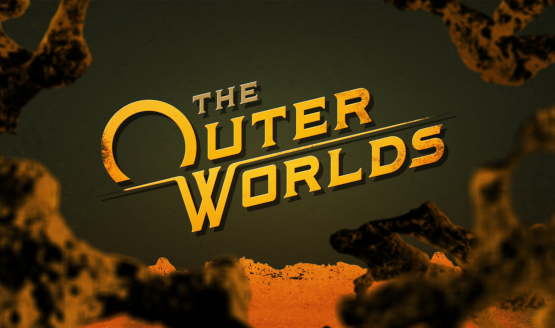
-
The Outer Worlds Hands-On Preview #2
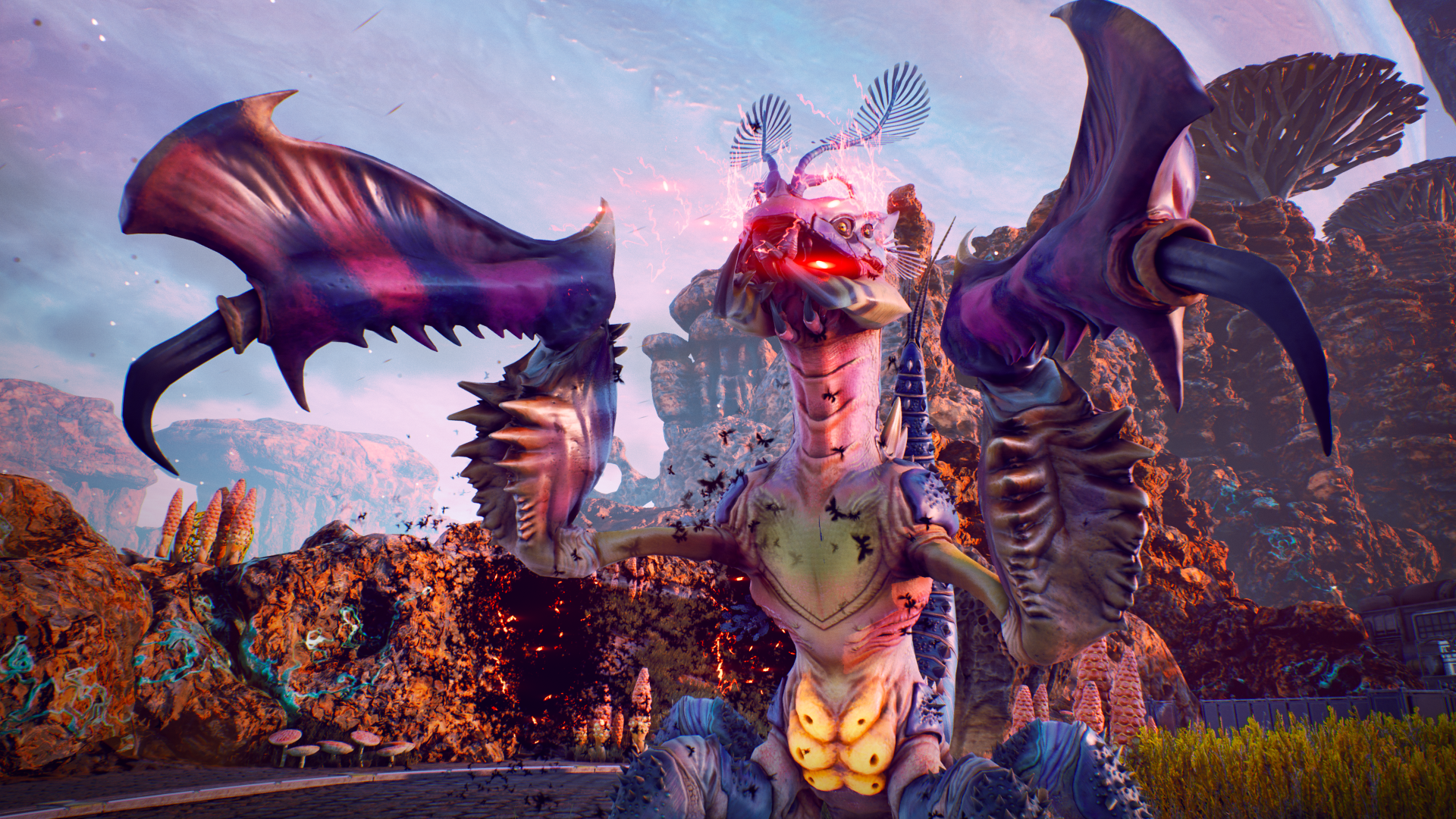
-
The Outer Worlds Hands-On Preview #3
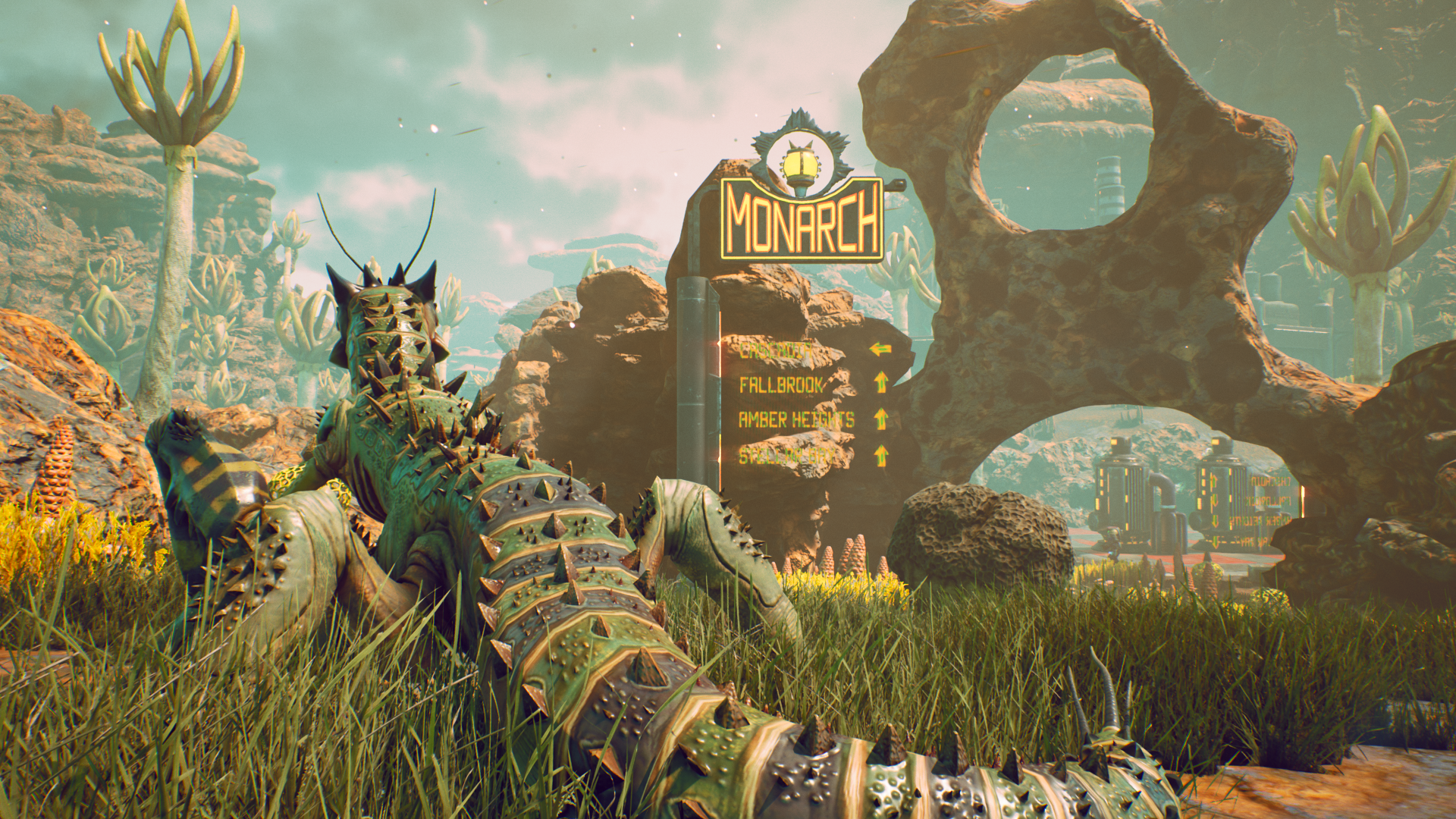
-
The Outer Worlds Hands-On Preview #4
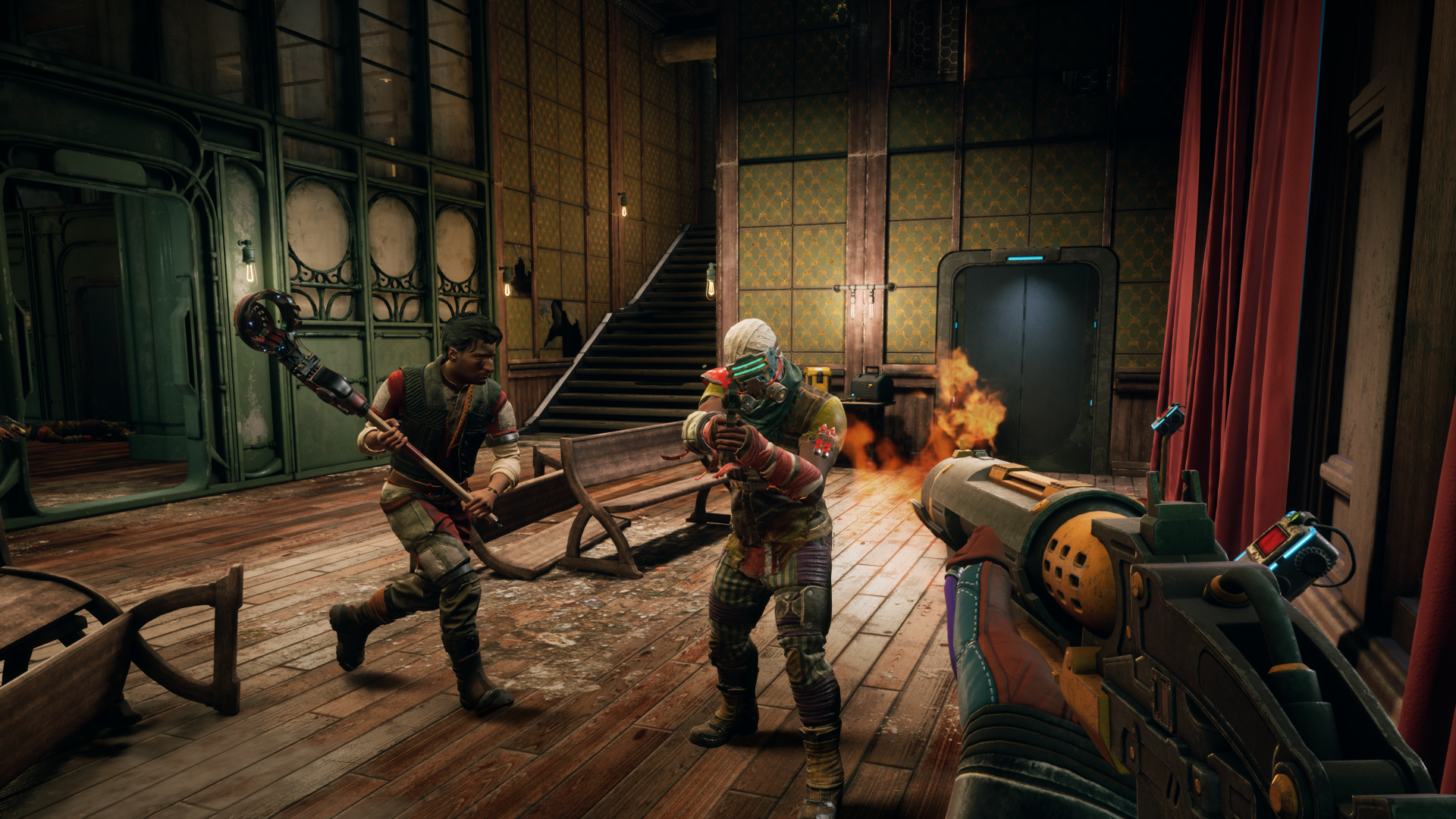
-
The Outer Worlds Hands-On Preview #5
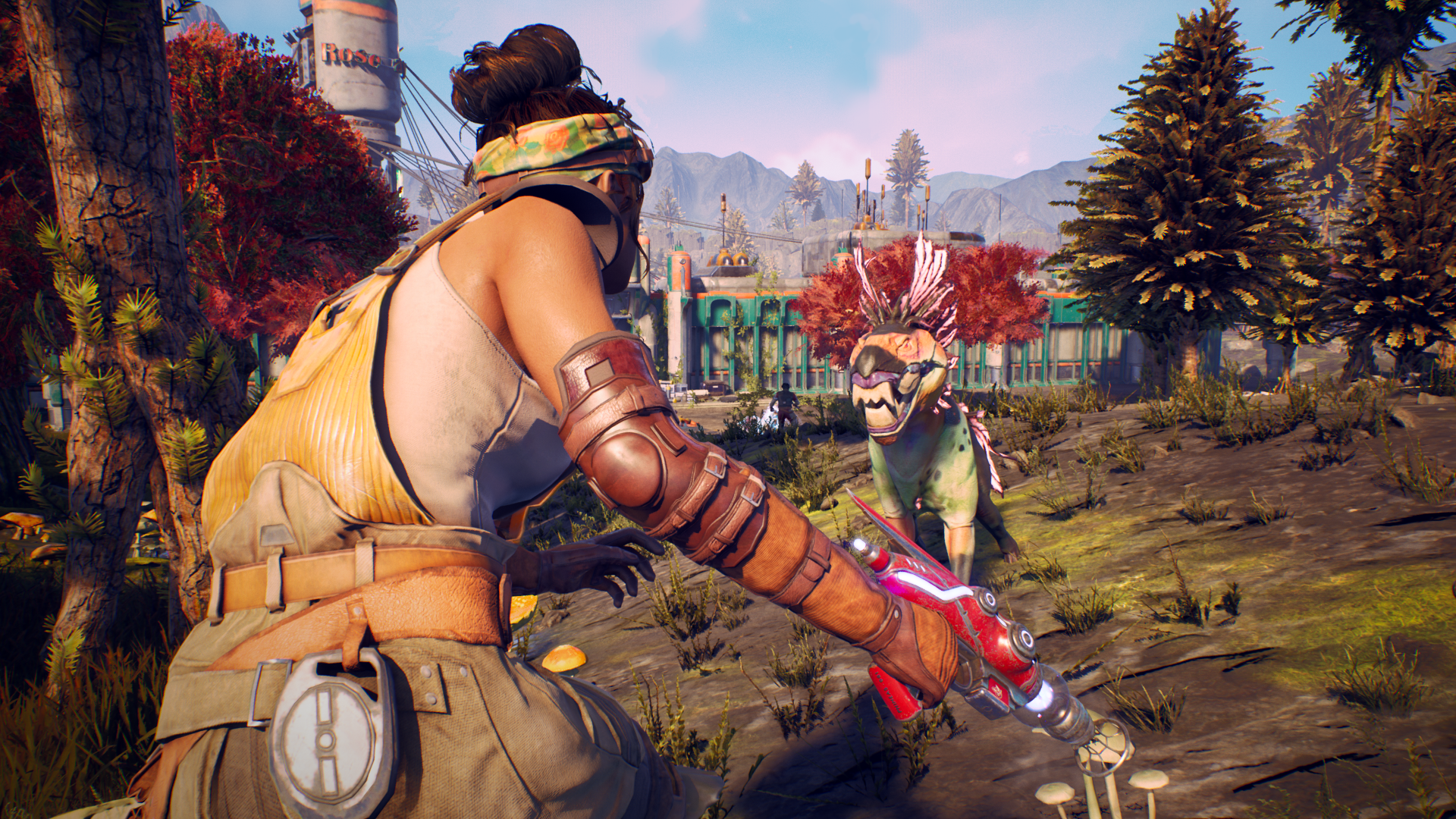
-
The Outer Worlds Hands-On Preview #6
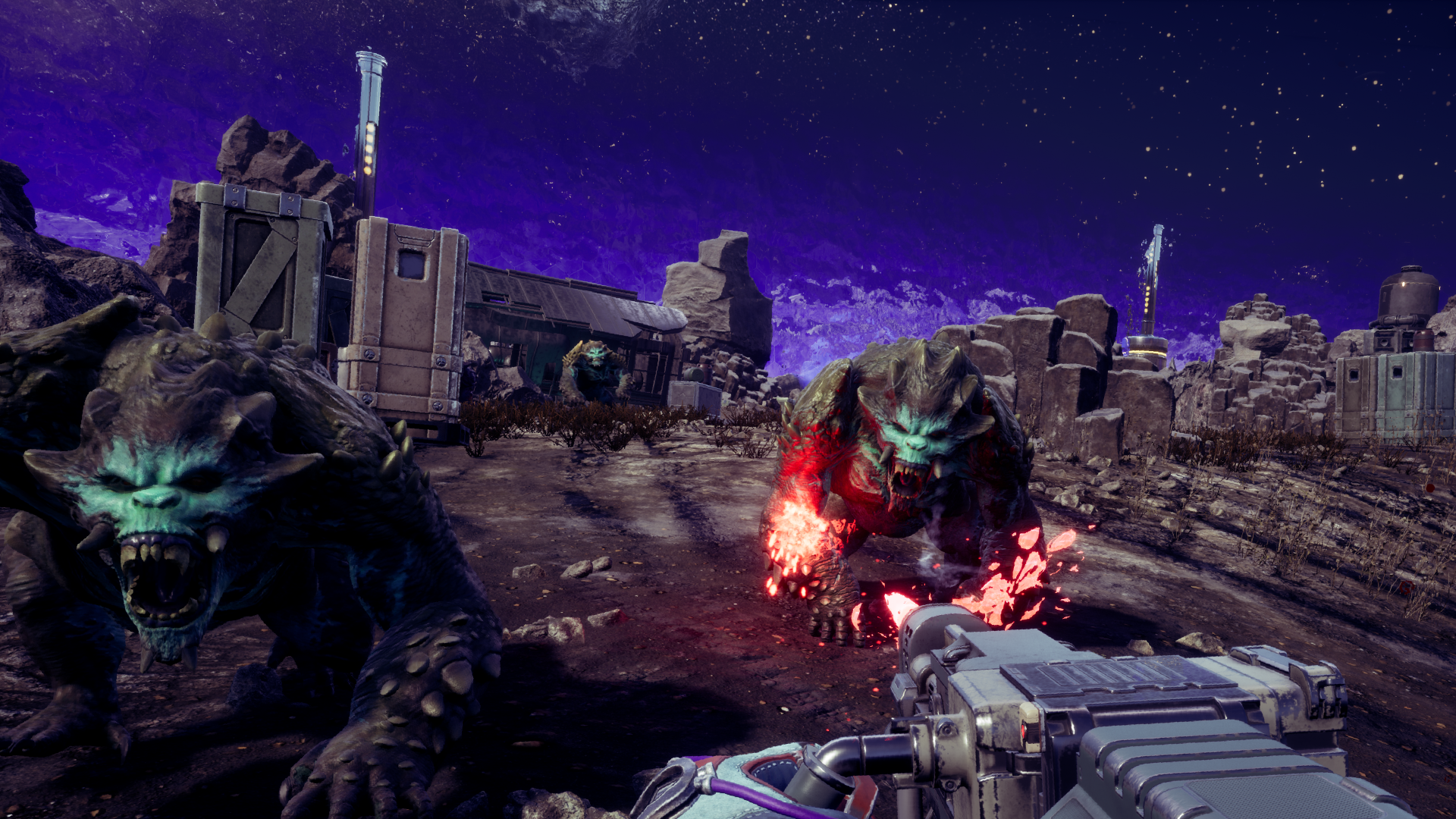
-
The Outer Worlds Hands-On Preview #7

-
The Outer Worlds Hands-On Preview #8
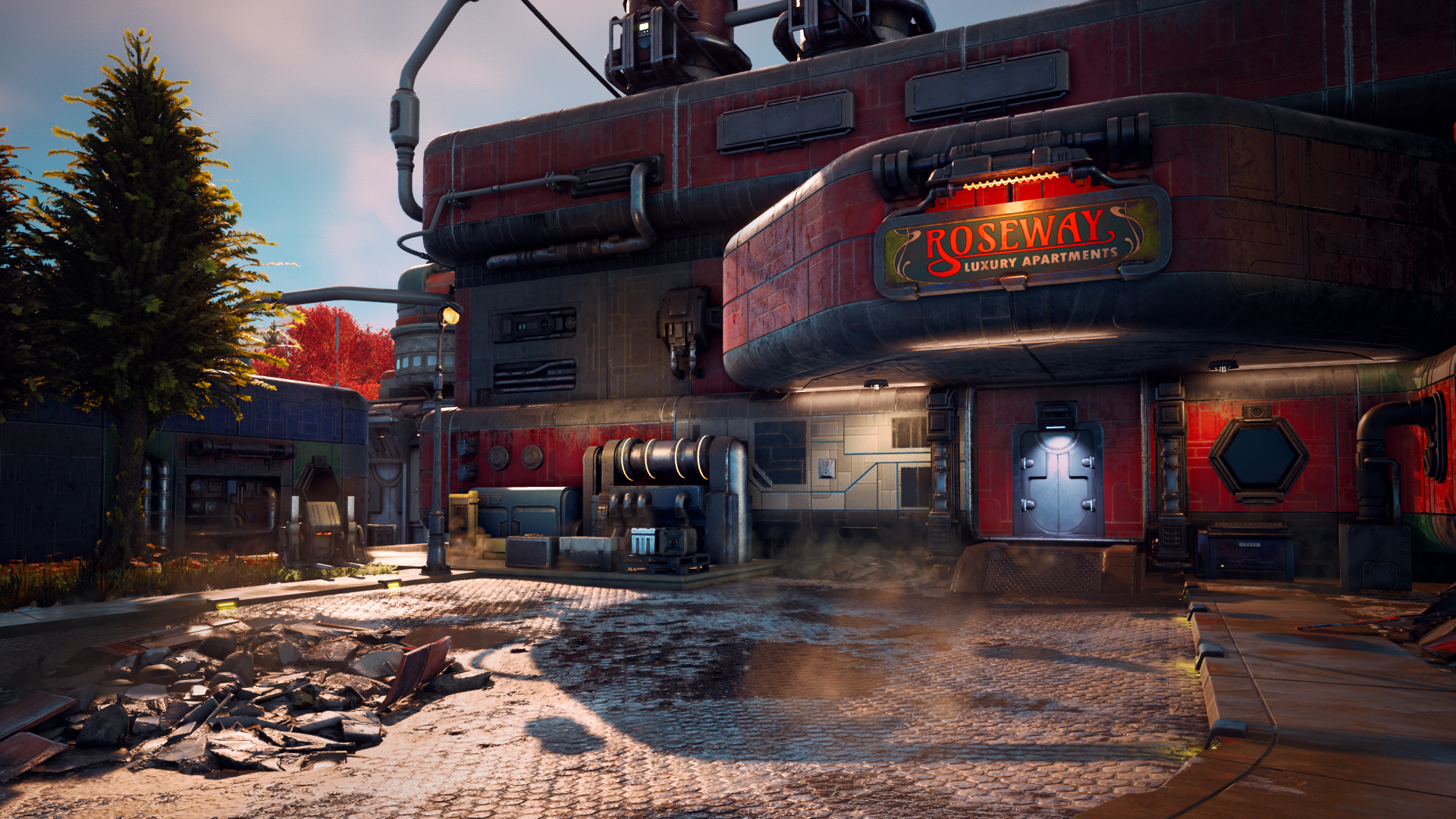
-
The Outer Worlds Hands-On Preview #9
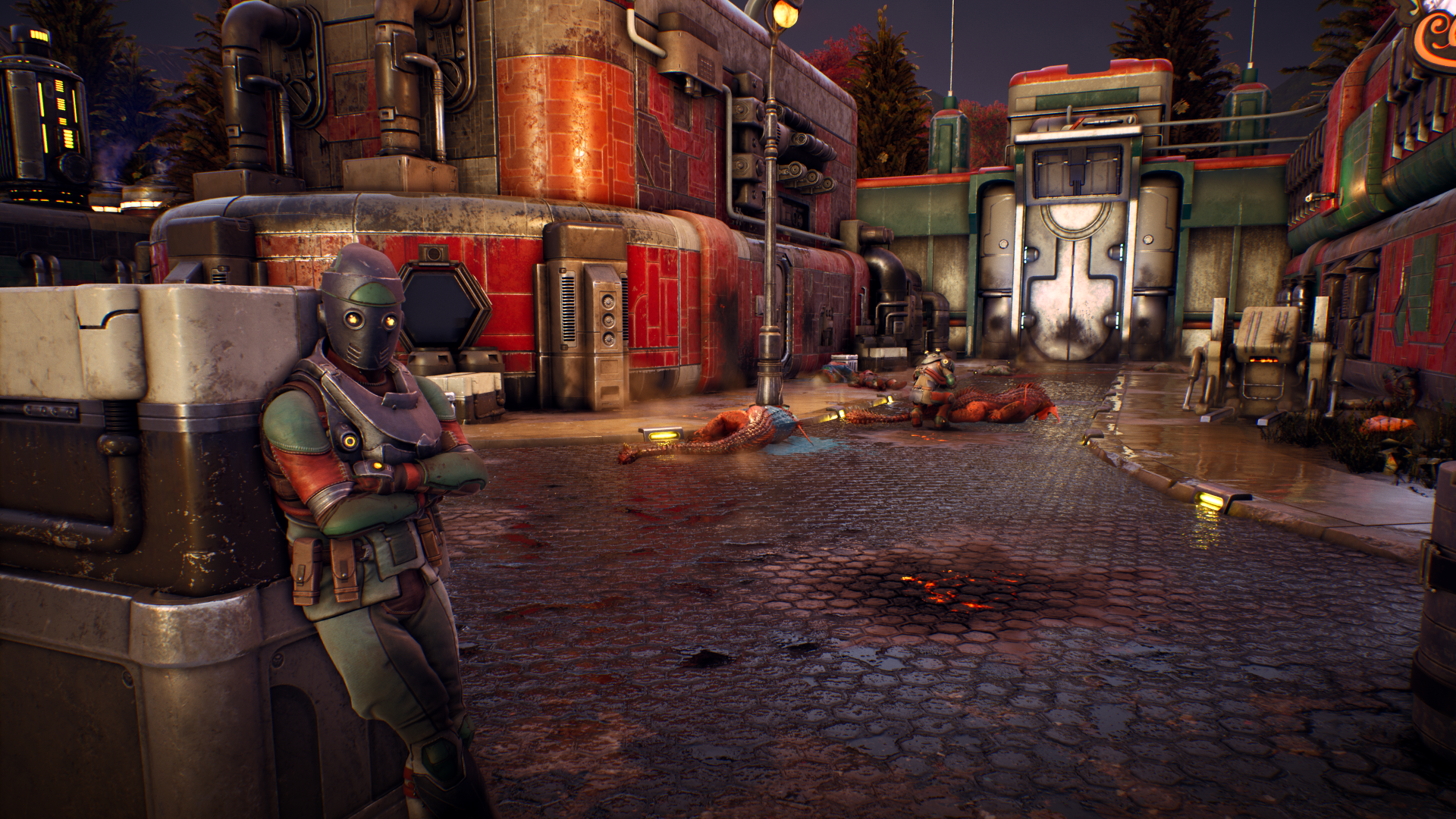
-
The Outer Worlds Hands-On Preview #10
